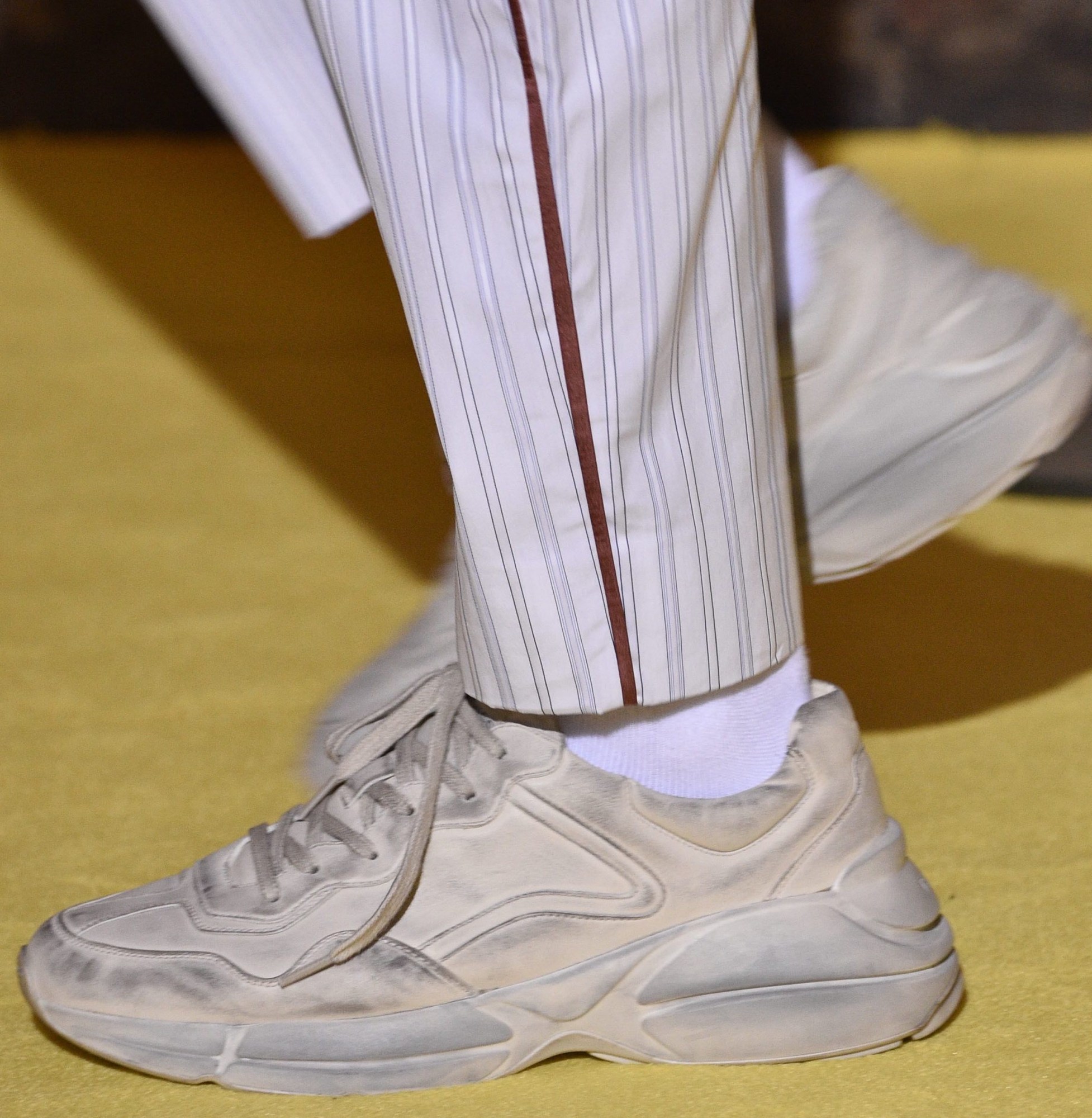Rappers and athletes alike are famous for maintaining fresh sneaker fixations. Fetty Wap allegedly buys a new pair of Air Jordans every day and former Brooklyn Nets forward Joe Johnson keeps 1000-plus pairs of sneakers in a temperature-controlled closet protected by a fingerprint security device. The average sneakerhead’s collection doesn’t come close to this level of extra, but requires a similar commitment when it comes to care and maintenance.
Dirty sneakers are a harsh no in hypebeast culture. Acquiring a truly “hype” pair requires the utmost dedication, braving infamously long lines, and constant checking of Twitter and sneaker release apps. Understandably, the prospect of shoes losing their original magic through wear and tear can be anxiety-inducing. Hence the myriad articles offering pro tips for keeping hype sneaks clean. Complex recommends using peanut butter to give a nice shine to a shoe’s plastic accents, while Instructables prescribes dental care tools for removing dark scuff marks.
But an emerging trend for faux-dirty sneakers is saying goodbye to all that obsessive cleaning.
We’ve seen the fashion industry’s love of all things pre-distressed before. From Rei Kawakubo’s iconic holey “lace” sweater to Marques’Almeida’s pre-frayed denim, fashion loves exploring the beauty hidden within damaged goods. Like the great Japanese designer Yohji Yamamoto once said, “To be modern is to tear the soul out of everything.”
A post shared by Eric周興哲 (@ericchou0622) on May 9, 2017 at 12:16am PDT
Several designers have recently presented versions of pre-dirtied sneakers. Raf Simons’s fall/winter 15 partnership with Adidas included Stan Smiths reinvented with black scuffed soles and leather uppers. Hedi Slimane’s spring/summer 16 show for Saint Laurent featured an understated pair of worn-in white sneakers as part of his shake-up of the storied French house. And for one of its many collaborations, Vetements teamed up with Reebok to produce the InstaPump Fury slip-on sneaker for spring/summer 17: a white leather shoe covered in graffiti accents and doodles reminiscent of the bathroom walls at your local dive bar.
A post shared by Valhalla rock (@valhallarock) on Jul 25, 2017 at 8:55am PDT
Each of these brands is inspired by youth culture (Raf Simons by teen tribes, Hedi Slimane by rising LA rockers, and Vetements by the European underground). And dirty sneakers are a perfect symbol of that iconoclasm and youthful rebellion. During the 70s, Converse All Stars were adopted by punk pioneers like The Sex Pistols and The Ramones. Over a decade later, Kurt Cobain made his beat-up sneakers the definitive shoe of grunge devotees and a retaliation against the ultra-glam aesthetic of the 80s and early 90s. These movements in music redefined fashion and what it meant to be young, independent, and original.
There is an irony, though, in trying to channel that spirit through $1,000 runway items.
Most recently, scuffed-up kicks made an appearance at Gucci’s Cruise 18 collection. No one has quite done the trend justice like creative director Alessandro Michele. His chunky worn-in shoes were reminiscent of the pair your dad keeps in the garage for mowing the lawn. Complete with sloppily tied laces, the divine shoes sparked a media frenzy and served as a cheeky deviation from Michele’s luxurious parade of lace, silk, and velvet.
A post shared by Joey P (@joeypcoke) on Sep 4, 2015 at 7:15pm PDT
While designers and their followers may be embracing beaten-up kicks, not everyone is on board. “I really mean zero offense to all of you, but I really don’t understand this love for beat-to-shit white sneakers,” one redditor wrote recently in a thread called “beat to shit white shoes.” “I am all for the vintage, worn-in look on things like leather boots and raw denim, but most of the shoes in this thread just looks dirty to me.”
Pre-destroyed footwear feels like the ultimate conclusion of a wider fashion trend for adopting and reworking mundane, inexpensive staples: Vetements’s Champion hoodies, Balenciaga’s IKEA bags, and Raf Simons’s Chinatown sun hats.
The question is whether this rebranding is a cheeky, self-knowing joke by designers, or a joke at the consumer’s expense? Is it a punk statement about consumption and decay, in the vein of Rei Kawakubo’s “Destroy” collection, or a “Derelicte” moment?
Credits
Text Abraham Martinez
Image Pietro D’aprano/Getty Images
